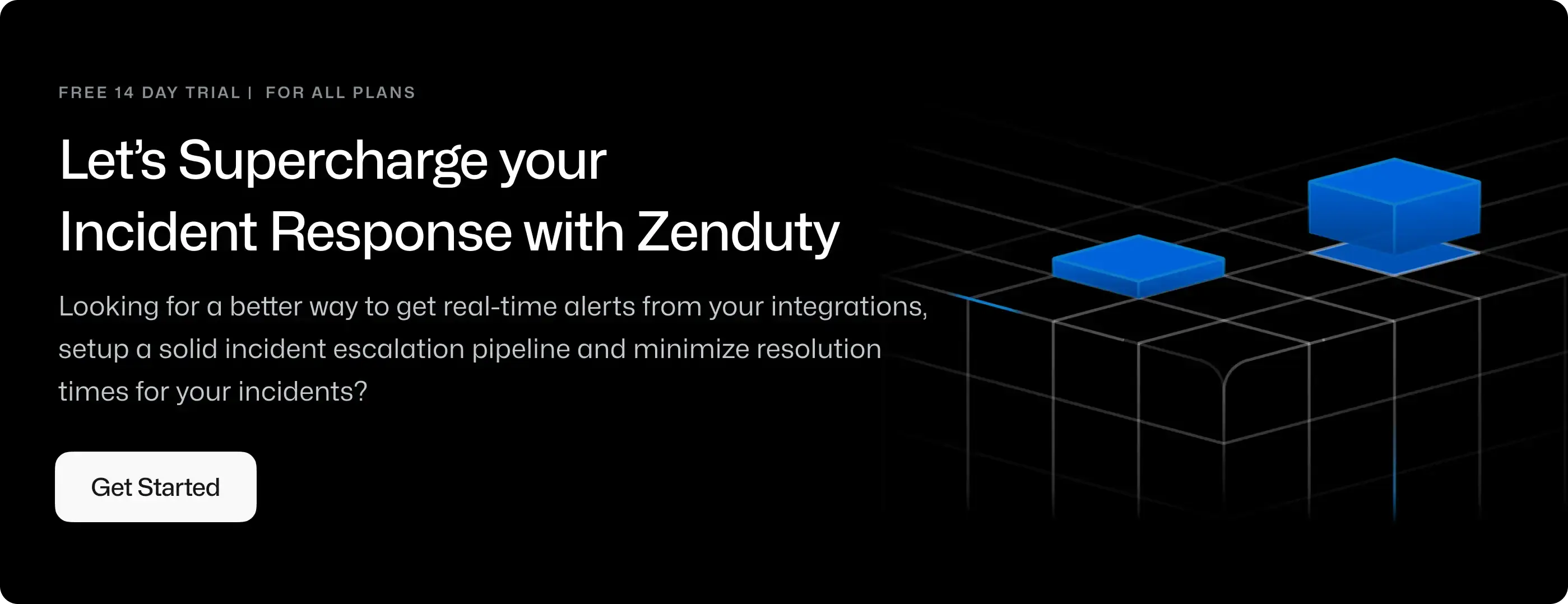IDERA (Copperegg) Integration Guide
IDERA's Uptime Cloud Monitor provides essential monitoring capabilities, giving you everything you need to identify and react to cloud infrastructure issues.
What can Zenduty do for IDERA users?
With the IDERA Integration, Zenduty sends new IDERA downtime alerts to the right team and notifies them based on on-call schedules via email, text messages(SMS), phone calls(Voice), Slack, Microsoft Teams and iOS & Android push notifications, and escalates alerts until the alert is acknowledged or closed. Zenduty provides your application engineers with detailed context around the IDERA alert along with playbooks and a complete incident command framework to triage and remediate and resolve incidents with speed.
Whenever a condition is met and an alert is created on IDERA CopperEgg in the active state, Zenduty will create an incident. When the alert is resolved on IDERA CopperEgg, Zenduty will auto-resolve the incident.
You can also use Alert Rules to custom route specific IDERA CopperEgg alerts to specific users, teams or escalation policies, write suppression rules, auto add notes, responders and incident tasks.
To integrate IDERA with Zenduty, complete the following steps:
In Zenduty:
-
To add a new IDERA integration, go to Teams on Zenduty and click on the team you want to add the integration to.
-
Next, go to Services and click on the relevant Service.
-
Go to Integrations and then Add New Integration. Give it a name and select the application IDERA from the dropdown menu.
-
Go to Configure under your Integrations and copy the Webhook URL generated.
In IDERA:
-
Log in to IDERA, and go to Alerts -> Notification Profiles.

-
To add a webhook, either click on the Edit button under the current user profile or create a new user profile.
-
Select the Webhook notification type in the dropdown and enter the Zenduty URL in the URL field. Then save the current notification.

-
The user can configure alerts for any service that needs to be monitored.
In this example, we'll look at monitoring the status of a URL.-
Click the Configure Alerts button in the menu on the left-side of the page. Then click on New Alert to add new alerts that monitor some endpoint.

-
The type of notification that should be selected to monitor an endpoint is Probe.
-
Once the notifications are configured and saved, click on the Probes tab at the top of the page.
-
Then click on Add a Probe and create a probe for the desired URL and save the configuration.

-
-
IDERA is now integrated, and all alerts will show up as Zenduty Incidents.
